
With so many skills that our students need to learn and that we need to teach, having a plan in place is important. But even with the best-designed plan, without structure, we can’t possibly cover everything we need to.
While you need structure across content areas, in this post, I focus on the importance of adding structure to your math block.
Whether you’re just starting your teaching journey or are looking to restructure your kindergarten math block, I hope that the tips in this post help!
Why Your Kindergarten Math Block Needs Structure
Having a structured daily math block in kindergarten is so important because it holds you accountable for keeping the lesson flowing. It also keeps you accountable for following a gradual release model.
The span of time that students can actively listen to instruction is short! Their attention spans just can’t focus for long lengths of time (and that’s totally normal and okay!). Breaking up your daily math block into shorter chunks of time allows you to get the most out of each block with your students.
Take a look at the kindergarten math routine below. Keep reading to learn more about each part.
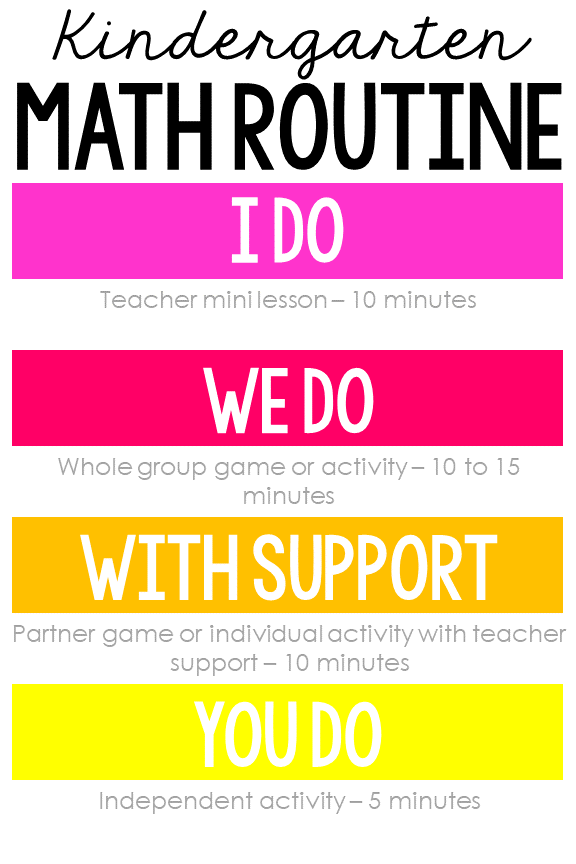
I Do – Teacher Mini-Lesson
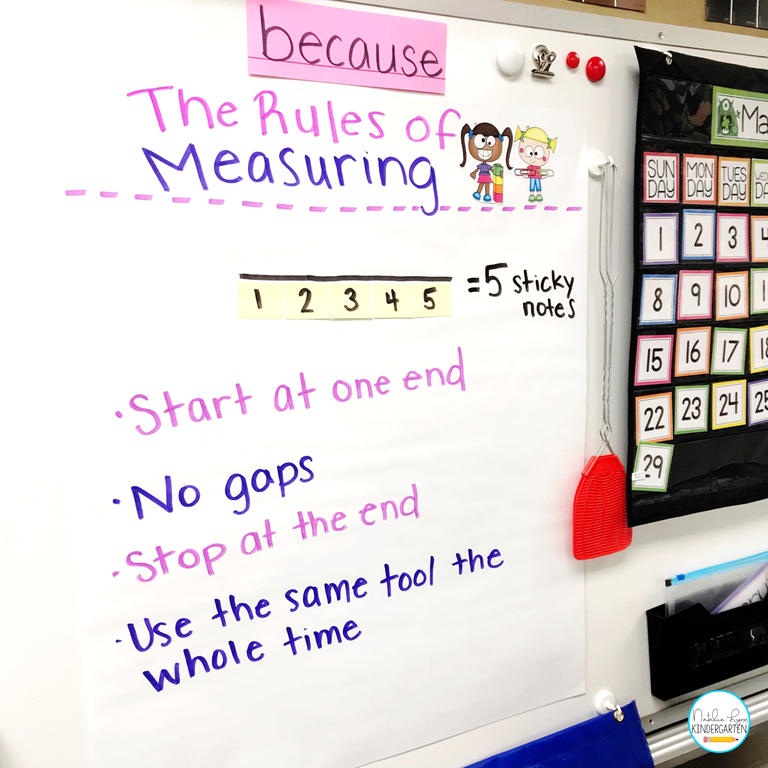
If you aren’t sure what to do during the teacher mini-lesson, here are some tips:
- Keep teaching short and to the point
- Introduce the learning target
- Give a short explanation of the topic
- Tell students how they will know when they’ve learned the topic
- Teach a short mini-lesson on the topic
The lessons from my kindergarten math curriculum are already broken up into daily math routines for you, making teaching your mini-lesson a breeze.
We Do – Whole Group Math Games and Activities
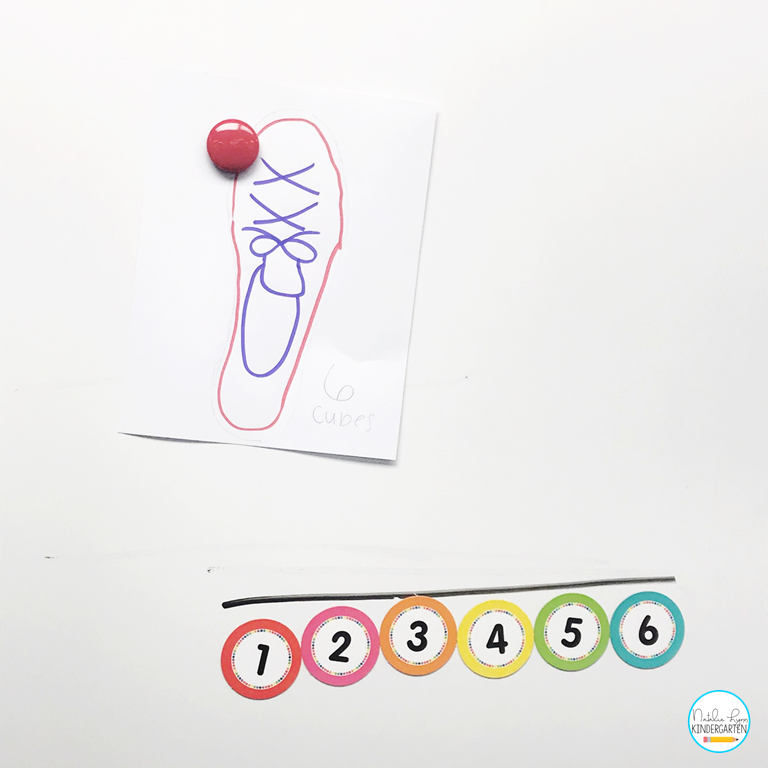
Once your mini-lesson is finished, it’s time for your students to begin practicing what they’ve learned in an engaging way. Playing a game or completing an activity together are great ways to give your students practice.
During the lesson pictured above, I did an activity with my students as our “We Do”. First, I drew a line on the board. Then, I modeled using magnets to measure the line. I kept making mistakes and allowing students to correct me. Then, they told me why what I was doing was wrong and what I should do instead.
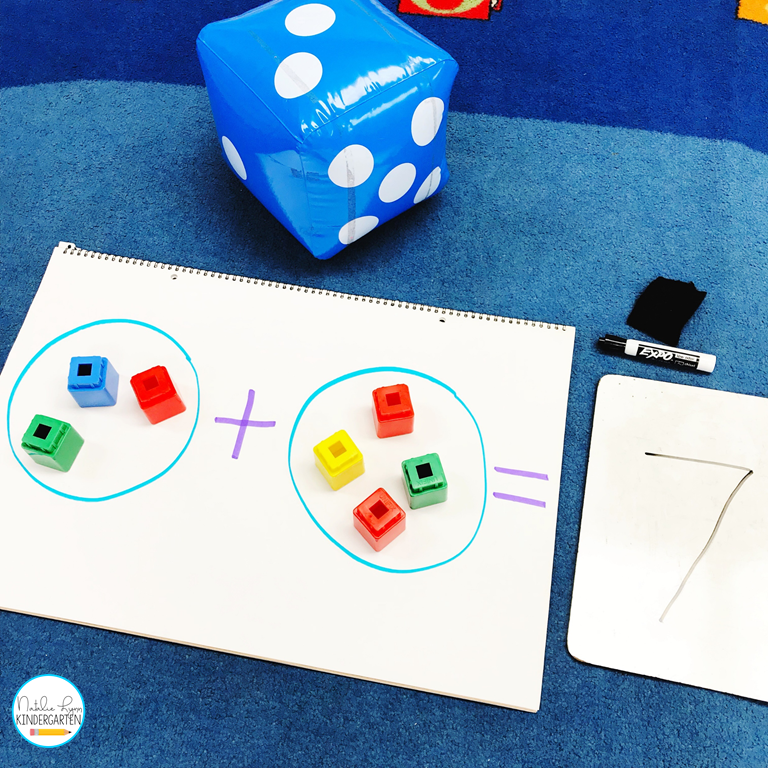
Another way to give students practice is by playing a game. In the game pictured above, students took turns rolling the dice and putting that many cubes on the anchor chart. Then, they added them up together.
Because students will follow their “We Do” time with “Support Time,” it’s helpful to first complete an activity together and then have students complete it with a partner during “Support Time”. This builds confidence since students aren’t learning a completely new activity each time.
With Support – Partner Math Games and Activities for Kindergarten
Now that students have practiced with you, it’s time for them to practice with a partner for support. This could also be one-on-one practice with the teacher. Either way works!
In the activity below, students first had practice as a class and then completed the activity with their partner.
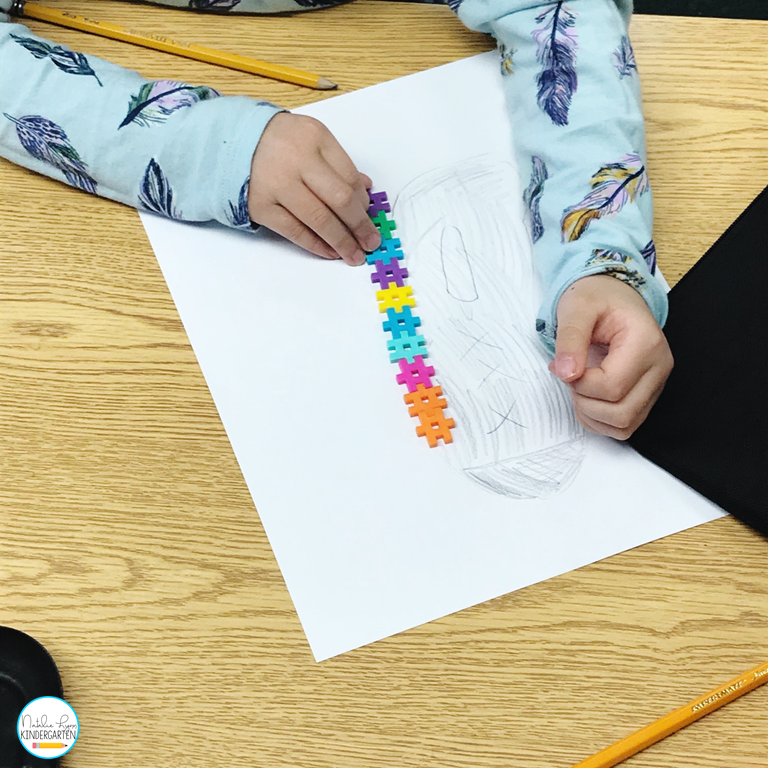
In this activity, students gained practice with using nonstandard measurement tools. To do this, students traced their shoes and then used different manipulatives to measure the length. They were able to walk around to different tables and practice measuring with different units.
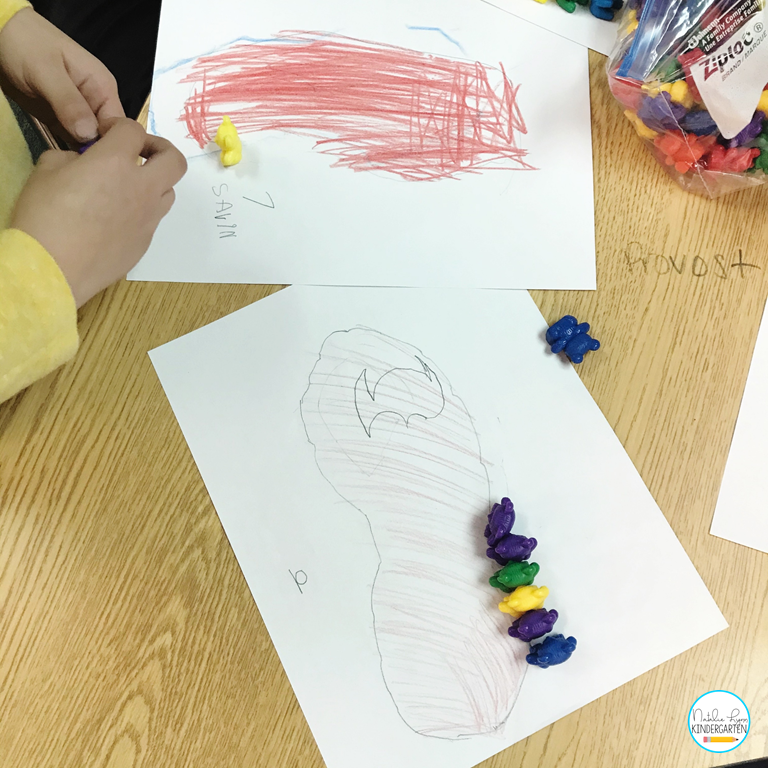
This was not an independent activity – but instead a “with support” activity – because students had each other at the tables for support. They also had me if they needed me. If an activity is truly independent, students will be completing it without any support or scaffolding.
Another example of a partner game is below:
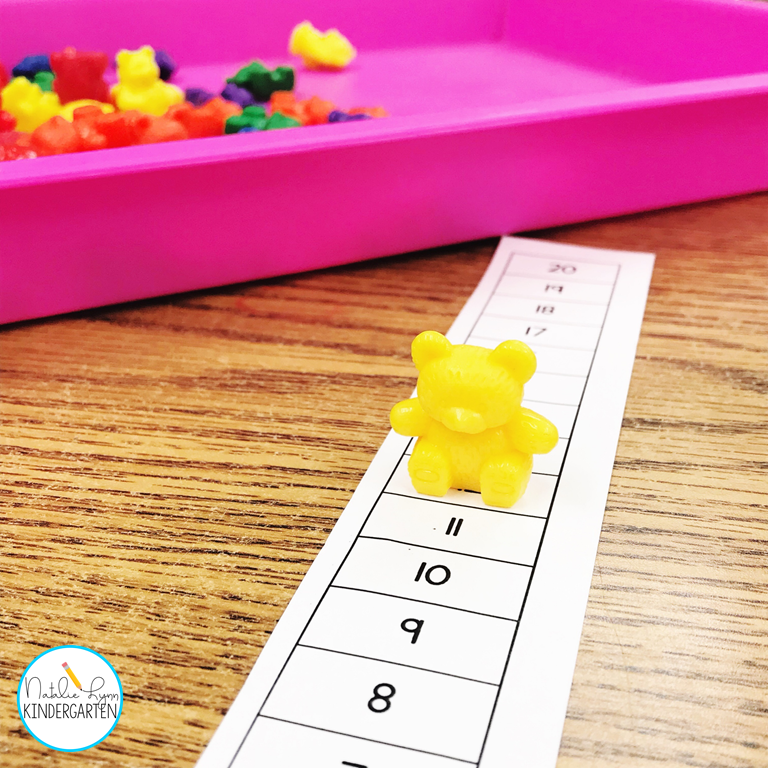
This partner math game followed a lesson on number order as well as whole group practice with putting a number line in order.
For this game, students took turns covering their eyes while their partners used a bear to cover a number. They then had to open their eyes, identify the covered number, and explain how they knew it was that number.
You can read more about this easy number sense game here.
You Do – Independent Math Activity
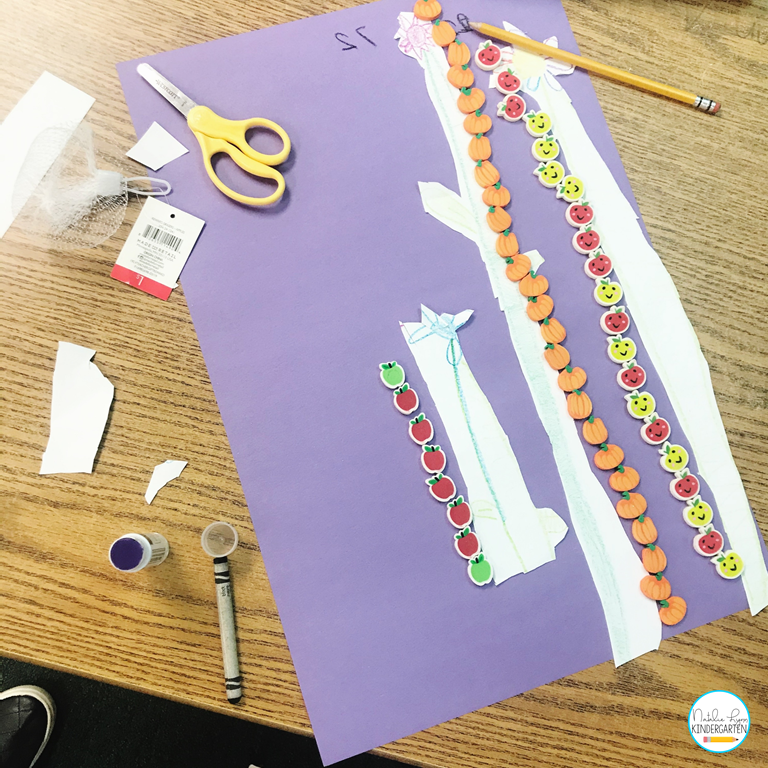
Independent activities are an assessment that allows you to really know where your students are. Because of this, I recommend not really giving any support or “coaching” during this time.
Independent math activities can be a math worksheet or printable. It can also be a math craft or another hands-on activity.
For the above activity, students drew 3 flowers that were of different heights. Then, they cut them out and glued them on a tall piece of paper. Last, they used nonstandard measurement tools to measure each flower.
Where Do Math Centers Fit in the Schedule?
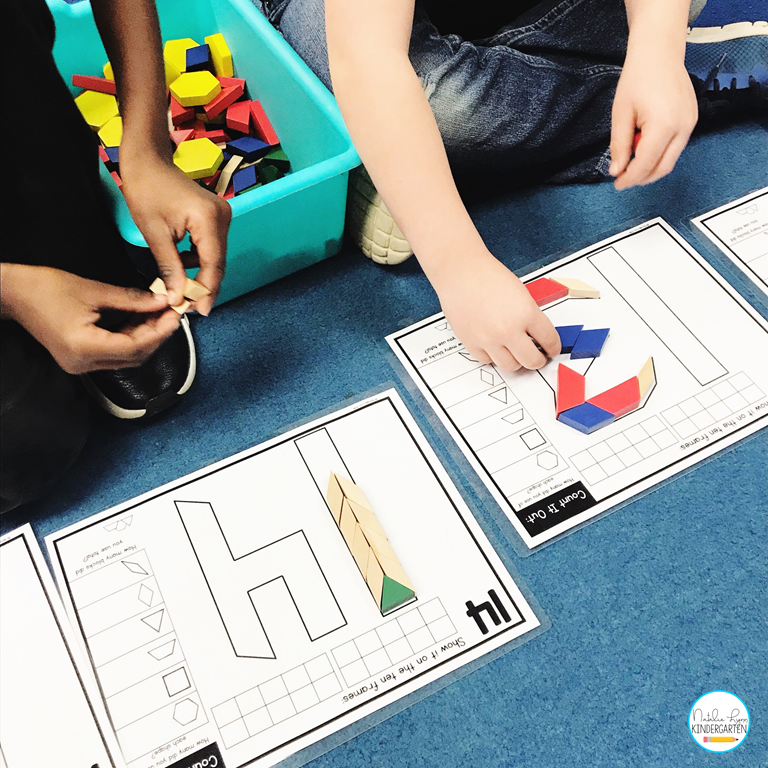
You may be looking at my recommended schedule for kindergarten math block and wondering, when are we supposed to do math centers? Should we not do them at all?
You definitely still want to do math centers! I just consider this separate from our daily math block. Our kindergarten daily math routine takes about 35-45 minutes. I try to have 20-30 minutes of math centers daily too, but it doesn’t always happen.
Want Your Math Block Planned For You?
My kindergarten math curriculum gives you daily lesson plans that follow the gradual release model to last you for the entire school year. It also includes differentiated lesson plans, games, printables, and home connections for each lesson. Grab it here!
You can read more about how to come up with a kindergarten daily schedule here.
Ready to structure (or restructure) your kindergarten math block? I can’t wait to hear how it goes! And if you still have questions, just shoot me an email at natalielynnkindergarten@gmail.com or comment below!
Pin this post for later:
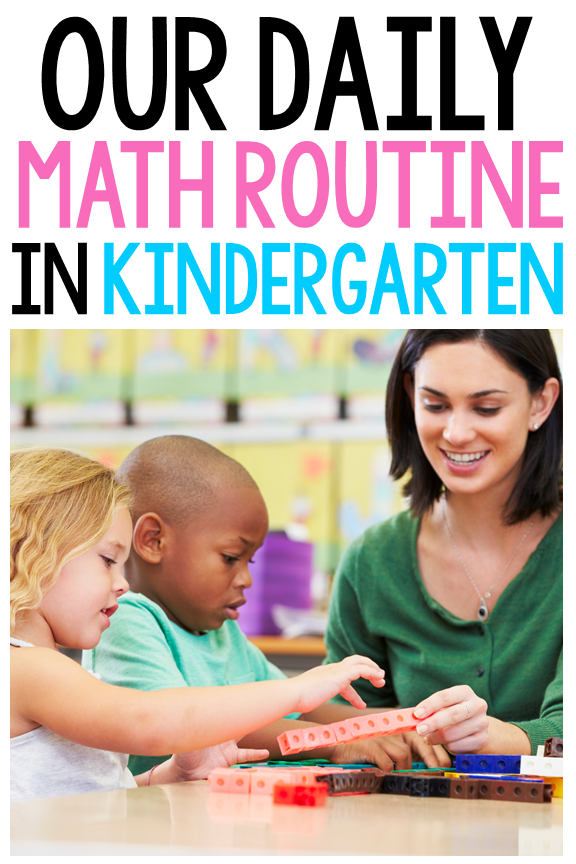


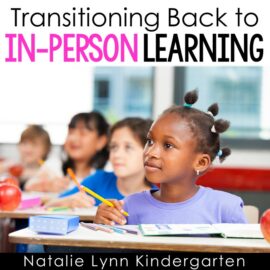
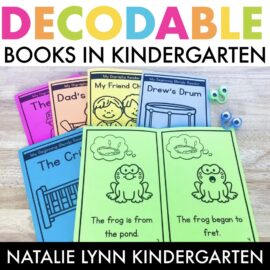
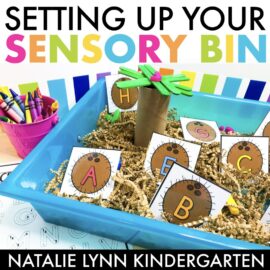

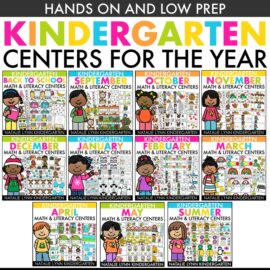
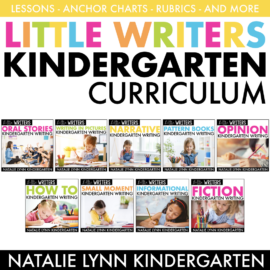
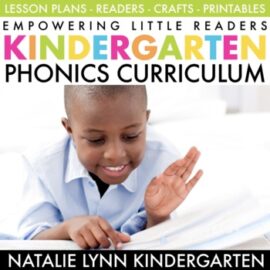
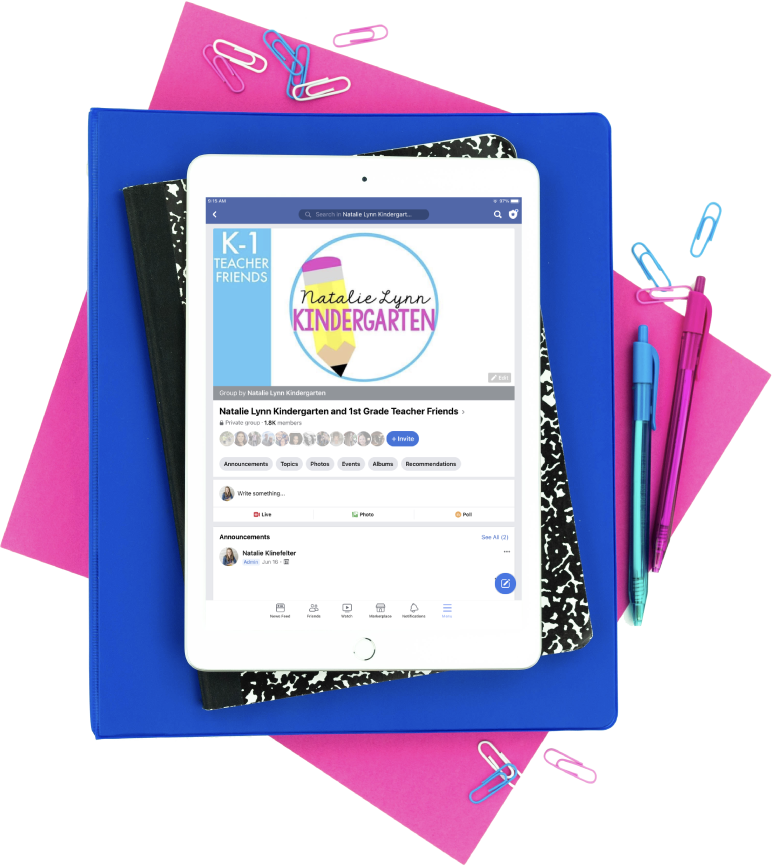

This is great! I teach Special Education, and some of my students are on this level. My ELL students can appreciate the accompanying pictures, as well.